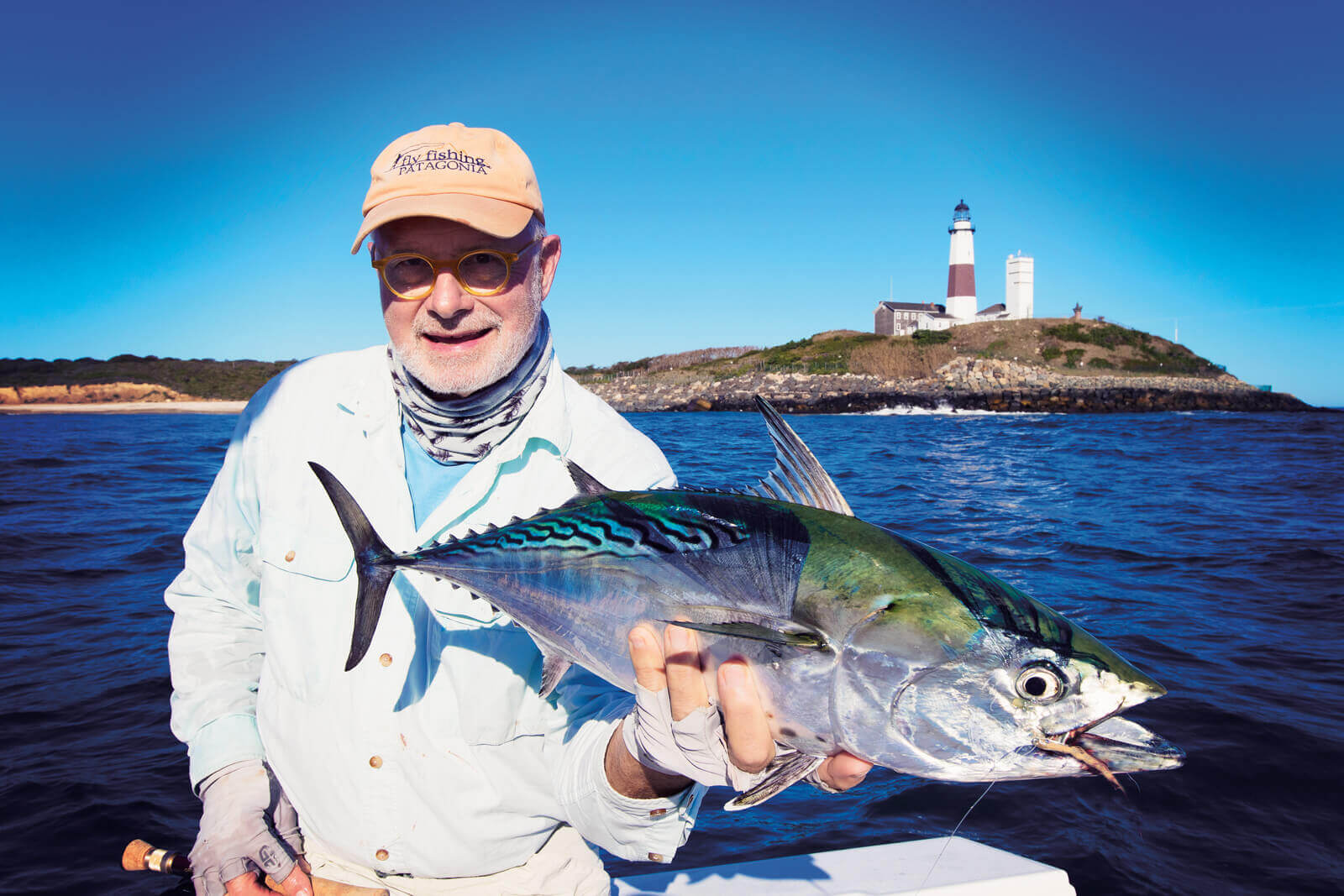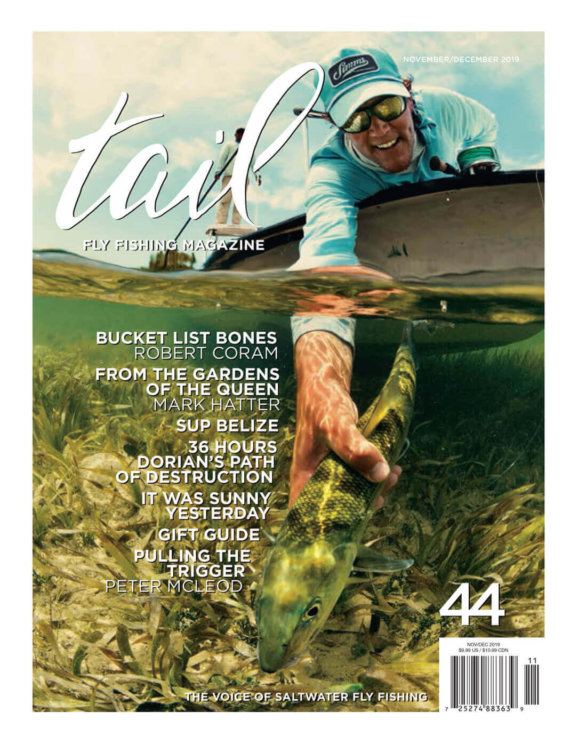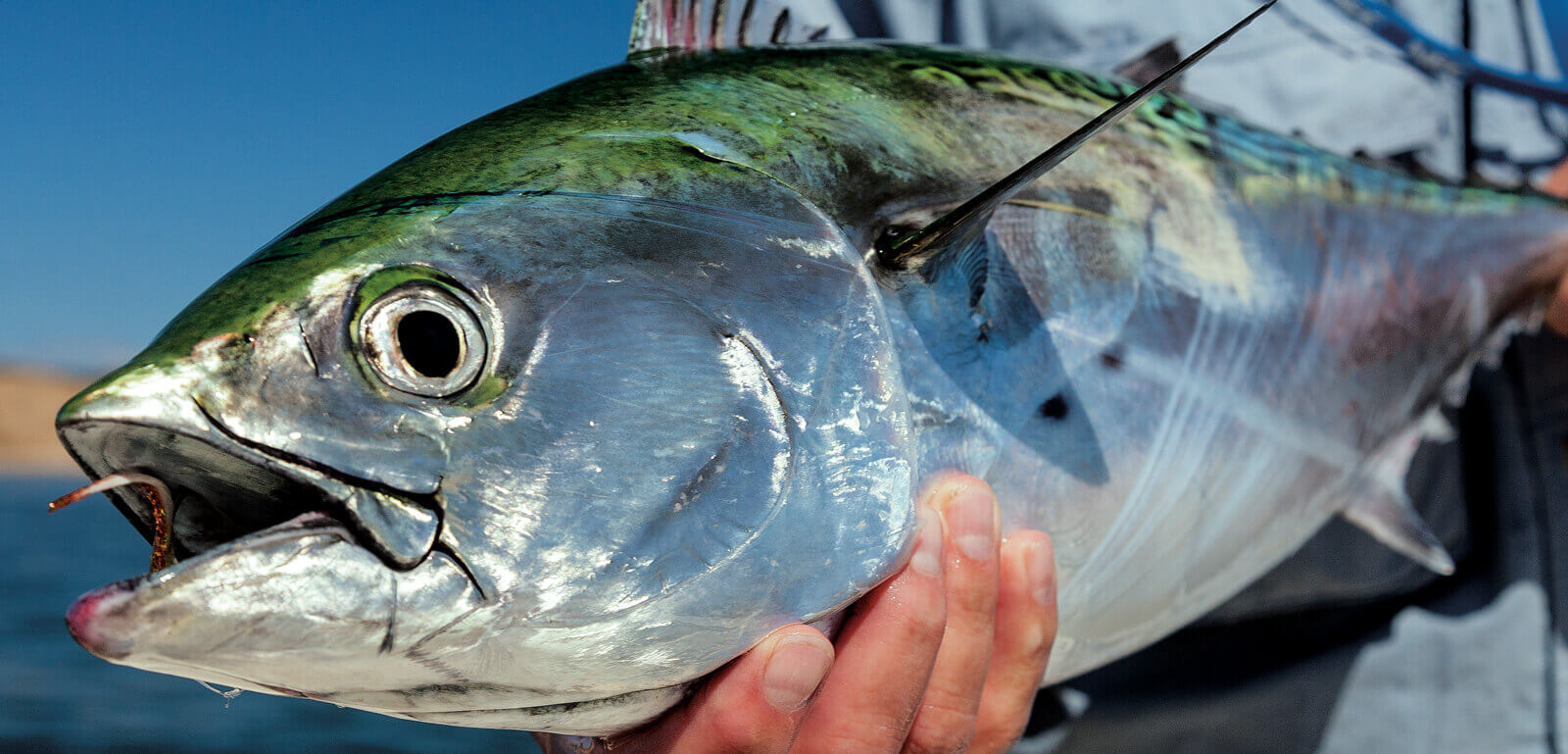When the 2013 fall season in Montauk ended for me with barely a striped bass blitz to be had, I merely wrote it off as nature doing its thing. When it again happened in 2014, I thought this might just be an anomaly. Let’s wait until next season before I start to worry. Well, its now 2019, and let me say I’m worried.
I started guiding fly anglers out of Montauk, New York, in the fall of 1999. I was blessed to have witnessed and photographed Montauk’s fabled striped bass blitzes from then through 2012. Some years were epic, with acres of stripers as far as you could see, engulfing millions of Bay anchovies. Author Peter Kaminsky best memorialized this in his 2001 classic, The Moon Pulled Up An Acre Of Bass. I was lucky enough to guide anglers as well as capture the images that many of us associate with the fall run at Montauk.
So what happened…? There are some differing opinions out there, but most of us in the fly fishing world who’ve been chasing stripers for decades point to climate change, overkill of the breeding stock by recreational anglers, and water-quality issues as the main culprits.
False Albacore (aka little tunny, Fat Albert, and just plain old albie) have been showing up at Montauk since before I arrived at the end of the ‘90s. They can arrive as early as mid-August or as late as mid-September. They’re usually gone by the first week in November, heading for God knows where to overwinter. Fly anglers have been targeting them out here at “The End” (as locals call Montauk), for the past 25 to 30 years. Some have been obsessed with them for decades, keeping meticulous records of their annual catch. Others simply enjoy them as a bonus to their striper fishing, along with big numbers of bluefish.
As we head into the fall run for 2019, the albie has become the main event. We’ve been fortunate at Montauk that our albie fishing has remained very strong and consistent over the years as our striper fishing is suffering and in decline. It’s not unusual for good fly anglers to have had 20-plus-fish days on albies the past few autumns. If I have anglers who want only to target striped bass, I suggest to them that they book in the latter part of the season. We’ve been seeing smaller blitzes of school-size stripers (26 inches and below) primarily toward mid- to late October and early November.

When gearing up for the albie season in Montauk, I like 10-weight rods with both intermediate and floating lines. I know some excellent albie anglers who use 9-weights, but I find the 10 a better overall choice from fighting line-blistering fish to casting in the wind, which is always part of a Montauk fall. A quality large- arbor reel is a must, loaded with 150 to 200 yards of 20- or 30-pound backing. I must admit I’ve gotten a few laughs over the years as I’ve seen cheap fly reels destroyed after a day of albie fishing. Anglers be warned!
Montauk albies average 6 to 8 pounds. A 10-pounder is considered a trophy fish here. A few 12- and 13-pound fish have been landed over the years, but don’t count on it. Also, don’t believe the hype of 100-yard runs on fish of this size. Novice fly anglers tend to exaggerate runs and weights due to inexperience. Set your drags for a good 50- to 60-yard first run after you hook one of these speedsters. Each successive run will be shorter, and when you get them close to the boat, they’ll dive to escape. That’s when the butt section of your 10-weight comes in handy.
One-and-a-half to 2-inch Bay Anchovies are Fat Albert’s main bait this time of year, but they’ll also eat squid, silversides, mullet, and peanut bunker. Fly patterns used by albie hunters lean heavily toward anchovy patterns. Size-6 to 1/0 hooks are used, with sizes 4 to 6 most common. Colors vary, but you can never go wrong with all white, chartreuse, or tan. I’m a big fan of epoxy flies. Done correctly, as by a master tier like Glen Mikkleson, who uses three coats of epoxy on each, they will last through many albacore. My best albie client, who is obsessed and fishes the East Coast from New York to Florida, uses a Tutti Frutti Deceiver almost exclusively. Go figure. My favorite way to fish for albacore is with a floating line and a Crease Fly, designed by local angler and guide Joe Blados. Throw to a boil, strip long and fast, see an explosion as a fast-moving albie smashes it, strip strike, and hold on!
Newbies will face a learning curve when casting to albie boils. When albies first arrive, they’re often in small groups, no more than a few fish. Because they’re moving so fast, they often zip past the presented fly or do not see it mixed in with the naturals. Albies are very tough to hook when they’re in small schools. As the season progresses and the schools get larger, hookups become the norm to a well-thrown fly. I tell my anglers speed and accuracy of delivery are usually more important than the distance of a cast. Getting tight to your fly quickly is essential to success. Slack is deadly. If you can lightly maintain contact to your line with your line hand as you present the fly and begin to strip as soon as the fly hits the water, you’ll increase your chances of a hookup dramatically.
Albie fishing at Montauk is done almost exclusively by boat. Albies here simply do not get close enough to shore for the fly angler to be successful. Correct positioning of your boat on a pod of busting albies is critical for both getting a tight line and not angering other boaters! Determine what direction the fish are moving (birds are a great tipoff, as they’re always moving in the same direction as the fish). Approaching from the side, try to get as close to the head of the school as you can. Never go in front of the school or you will put them down, as well as incur the wrath of your fellow anglers. Either cast your fly into the head of the school or over it and drag you fly through the pod. A medium retrieve should be all you need to get tight.
Don’t plan on taking an albie home to cook. They’re basically inedible, although a few well-known chefs out here on the east end have reputedly made some good sushi out of a certain part of them.
By Jim Levison (jimlevisonphoto.com)
As a conservation note, Long Island guide and lifelong conservationist Captain John McMurray has created a new organization, American Saltwater Guides Association, that is open to all. Its goal is to promote sustainable business through marine conservation. One of its most urgent missions is to do everything possible to bring back our striper fishery.
For more information, visit: saltwaterguidesassociation.com
 SUBSCRIBE TO TAIL FLY FISHING MAGAZINE
SUBSCRIBE TO TAIL FLY FISHING MAGAZINE
Miracles of the Fall – Striped Bass, False Albacore & Bonita


